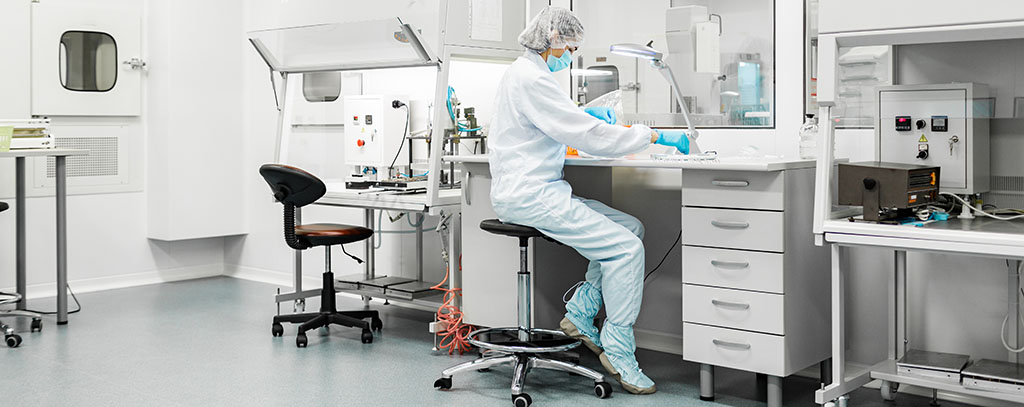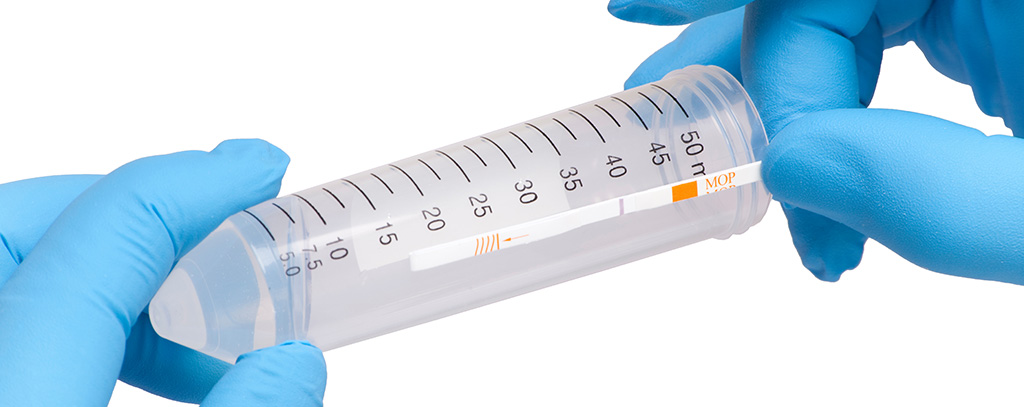


What Does a 5 Panel Drug Test Test For? Comprehensive Guide
May 27, 2023


How is a 5 Panel Drug Test Done: A Comprehensive Guide
May 27, 2023Does alcohol show up on a 5 panel drug test? This is a frequent query asked by businesses looking to sustain a safe and efficient workplace. In this blog post, we will examine the components of 5 panel drug tests - what they test for, how to administer them and their advantages - as well as whether or not alcohol can be detected.
We will also delve into whether or not these tests can detect alcohol consumption in employees. By examining the types of tests that can detect alcohol use and discussing recent advancements in testing methods, you'll gain valuable insights into how your company can effectively screen for substance abuse.
Furthermore, we will discuss factors affecting how long alcohol stays in one's system as well as the legal consequences associated with drinking and driving or working under the influence of alcohol. By understanding these important aspects related to Does alcohol show up on a 5 panel drug test?, you'll be better equipped to make informed decisions about workplace safety measures.
Table of contents
- 5 Panel Urine Drug and Alcohol Test
- Turnaround Time for Results
- Screening Process and Substances Detected
- Developing an Effective Drug and Alcohol Policy
- Oral Fluid Testing as an Alternative Method
- Substances Detected on a 5 Panel Drug Test
- Choosing the Right Drug Testing Method for Your Organization
- Frequently Asked Questions Does alcohol Show Up on a 5 Panel Drug Test
- Conclusion
5 Panel Urine Drug and Alcohol Test
The 5 Panel Urine Drug and Alcohol Test offered by Halux Diagnostic is designed to screen for common drugs of abuse, including alcohol, in a urine sample. With a turnaround time of 1-3 business days, this test provides employers with an efficient method for detecting substance use among employees.
Turnaround Time for Results
The quick turnaround time of 1-3 business days ensures that companies can swiftly take action based on the results obtained from the drug tests. This promptness helps maintain workplace safety while minimizing disruptions caused by potential substance abuse issues.
Screening Process and Substances Detected
Apart from alcohol detection, the 5 panel urine drug test also screens for other commonly abused substances such as:
- Marijuana (THC)
- Cocaine (COC)
- Opiates (OPI)
- Amphetamines (AMP)
- Methamphetamine (mAMP/MET)
This comprehensive screening process enables organizations to identify recent drug or alcohol consumption effectively. It's important to note that these tests measure the presence of specific metabolites in a person's system rather than their actual blood alcohol concentration (BAC). The presence of these metabolites indicates recent use but does not necessarily imply impairment at work.
Advanced techniques such as GC-MS and LC-MS/MS are employed to ensure accuracy in positive results, providing a more dependable assessment of an employee's substance use. This helps rule out any false positives and provides a more reliable assessment of an employee's substance use.
The 5 Panel Urine Drug and Alcohol Test is a reliable way to detect the presence of alcohol in an individual's system. It is important for companies to have an effective drug and alcohol policy that includes different types of tests such as urinalysis, hair follicle tests or saliva tests with specific cut-off levels determined by Medical Review Officers (MRO).
Developing an Effective Drug and Alcohol Policy
To develop an effective drug and alcohol policy, companies need knowledge about the various types of tests available on the market. SureHire offers self-study and in-person Reasonable Suspicion Training programs aimed at helping companies understand their options when it comes to drug testing methods.
Types of Drug Tests: Urinalysis, Hair Follicle Tests or Saliva Tests
- Urinalysis: A urine sample is collected from the individual being tested, which is then analyzed for specific drugs or metabolites. This testing method is favored due to its affordability and the capability of indicating recent substance consumption.
- Hair Follicle Test: In this method, a small amount of hair (usually from the head) is collected for analysis. Hair follicle tests can provide a longer detection window compared to urinalysis but may be more expensive overall.
- Saliva Test: Also known as oral fluid testing, saliva samples are collected using swabs placed inside the mouth. These tests have shorter detection windows than hair follicle tests but can still effectively identify recent substance abuse.
The Importance of Cut-off Levels Determined by Medical Review Officers (MRO)
Cut-off levels are essential in making the call on whether a test outcome should be seen as positive or negative for drug abuse. An MRO reviews all laboratory results before making any final decisions regarding potential disciplinary actions against employees found using substances while under employment contracts prohibiting such behavior.
A proper understanding of cut-off levels helps employers avoid false positives caused by factors such as passive exposure to drugs or the use of over-the-counter medications. By establishing appropriate cut-off levels, companies can maintain a fair and accurate drug testing policy that promotes workplace safety while respecting employee privacy.
Developing an effective drug and alcohol policy is essential to ensuring the safety of employees in any workplace. Oral fluid testing provides another alternative method for detecting substance use, with MROs playing a key role in reviewing test results.
Oral Fluid Testing as an Alternative Method
In addition to screening for alcohol consumption through urine samples, employers may also opt to conduct oral fluid testing, which can detect THC use within several weeks after ingestion. This method offers a non-invasive and quick way of collecting samples from employees, making it a popular choice among companies that require frequent drug tests.
Detection Window for THC Use in Oral Fluid Testing
The detection window for THC use in oral fluid testing varies depending on factors such as the frequency of use and individual metabolism rates. Generally, this type of test can detect recent drug usage within 24 hours up to three days after consumption. However, heavy or chronic users might have longer detection windows extending up to two weeks or more. It is essential for employers to understand these limitations when deciding whether oral fluid testing is suitable for their organization's needs.
Role of MROs in Reviewing Positive Test Results
Positive results obtained from oral fluid tests must be sent over to a Medical Review Officer (MRO), who will review them before making any final decisions regarding potential disciplinary actions against employees found using substances while under employment contracts prohibiting such behavior. The MRO plays a crucial role in ensuring the accuracy and validity of test results by reviewing laboratory reports, evaluating possible explanations for positive findings (such as prescription medications), and confirming with the employee before reporting the final result back to the employer.
- Advantages: Oral fluid tests are easy-to-administer, less invasive than blood tests, and provide a shorter detection window for recent drug use.
- Disadvantages: They may not be as accurate in detecting long-term substance abuse compared to urine or hair follicle tests, and the results need confirmation testing by an MRO.
In conclusion, oral fluid testing can serve as an alternative method for employers looking to detect recent drug usage among their employees. It is essential to contemplate the advantages and drawbacks of this strategy against other potential choices, such as urine testing or hair follicle examination, before making a choice that best fits your organization's special conditions.
Oral fluid testing can be a more dependable and precise method than traditional urine tests for drug screening. Additionally, the 5 panel drug test can detect various substances including amphetamines, methamphetamine, cocaine metabolites and opiates.
Substances Detected on a 5 Panel Drug Test
Although the primary focus here is whether alcohol shows up on a 5 panel drug test; other commonly abused substances are also detected during these screenings. The 5 panel drug test screens for amphetamines, methamphetamines, cocaine metabolites and opiates such as codeine, morphine or hydrocodone.
Amphetamines Detection
The 5 panel drug test detects the presence of amphetamines in a urine sample. Amphetamines are central nervous system stimulants that can be prescribed for medical purposes but are often misused recreationally. The detection window for amphetamine use varies depending on factors such as frequency of use and individual metabolism, but typically ranges from two to five days after ingestion. For more information about amphetamine testing and its importance in maintaining workplace safety, read this research article.
Methamphetamine Detection
Methamphetamine is another substance that can be identified through a 5 panel drug test. This highly addictive illegal drug has dangerous side effects including increased heart rate, elevated blood pressure, and potential damage to the brain's dopamine receptors. Urine tests can typically identify methamphetamine within one to four days of consumption; however, those who use the drug chronically may have a longer detection window due to accumulated levels in their system. Learn more about methamphetamine abuse and its impact on society by visiting this National Institute on Drug Abuse page.
Cocaine Metabolites Detection
The 5 panel drug test also screens for cocaine metabolites, which are byproducts of the body's processing of cocaine. Benzoylecgonine and ecgonine methyl ester are two such metabolites that can be detected in urine samples. The detection window for these substances typically ranges from two to four days after use, but may vary depending on factors like frequency of use and individual metabolism rates. For a comprehensive overview of cocaine testing methods and their significance in addressing substance abuse issues, refer to this scientific review.
Opiates Detection
Last but not least, opiates such as codeine, morphine or hydrocodone can be identified through a 5 panel drug test. These powerful pain-relieving medications have high potential for misuse due to their addictive properties. Opiate detection windows depend on various factors including dosage levels and individual metabolic rates; however, they generally range between one to three days following ingestion. To gain more insight into opiate testing procedures and their role in combating the opioid crisis, explore this Substance Abuse and Mental Health Services Administration report.
A 5 panel drug test can be a useful tool for organizations to detect the presence of certain substances in individuals, yet other testing methods such as hair follicle analysis should also be considered. However, it is important to consider other methods such as hair follicle analysis when choosing the right drug testing method for your organization.
Choosing the Right Drug Testing Method for Your Organization
It is important for employers to grasp that each testing system has its own benefits and drawbacks; thus, it's essential they pick one which best meets their business's exclusive conditions. For instance, urine-based tests are known for being cost-effective but may not be as accurate compared to hair follicle analysis which provides longer detection windows but could be more expensive overall.
Advantages and Disadvantages of Urine-Based Tests
Urine-based drug tests, such as the 5 panel drug test, are commonly used by companies due to their affordability and quick turnaround time. Urine tests, like the 5 panel drug test, can identify recent substance consumption within a short period of time up to multiple days. However, there are some limitations with this method:
- The detection window varies greatly between substances.
- There is potential for false positives or negatives due to factors like dilution or adulteration of samples.
- Certain prescription medications may cause cross-reactivity with illegal drugs on these tests.
Benefits of Hair Follicle Analysis in Drug Testing
In contrast, hair follicle analysis offers a longer detection window - typically up to 90 days - allowing employers to identify patterns of substance abuse over an extended period. This method also minimizes chances of sample tampering since hair samples cannot easily be altered or substituted like urine samples can. Some additional benefits include:
- Detection of a wider range of substances, including alcohol.
- Lower risk of false positives due to more accurate testing methods.
- The ability to differentiate between one-time use and habitual drug abuse.
Ultimately, the choice between urine-based tests and hair follicle analysis will depend on factors such as budget constraints, desired detection windows, and the specific substances employers wish to screen for. By taking these considerations into account, employers can determine which drug testing method best suits their organization's objectives for ensuring a secure and productive work atmosphere.
Frequently Asked Questions Does alcohol Show Up on a 5 Panel Drug Test
Does alcohol show up on a drug panel?
Alcohol does not typically show up on a standard 5-panel drug test. However, if an employer wants to specifically test for alcohol, they can request an additional alcohol screening, such as breath or saliva tests.
What does a 5 panel drug test test for alcohol?
A standard 5-panel drug test does not include testing for alcohol. It screens for amphetamines, methamphetamine, cocaine metabolites, opiates and THC. If employers want to screen employees for alcohol use, they must add it separately using methods like blood ethanol tests.
Can you drink alcohol before giving a urine sample?
You should avoid consuming any substances that could affect the accuracy of your urine sample before taking the test. Drinking large amounts of water or other fluids may also dilute your sample and lead to inaccurate results.
Detection window for THC use in oral fluid testing
- In most cases: Up to 24 hours after last use
- Frequent users: Up to 72 hours after last use
- Heavy users: Detection period varies significantly (up to several weeks)
MROs' role in reviewing positive results:
- MROs review laboratory findings,
- Evaluate medical explanations,
- Contact donors when necessary,
- Determine final result status (positive/negative).
Conclusion
After reading this article, we now know that a 5 panel drug test does not typically detect alcohol. However, there are specific tests available to detect recent alcohol use and false positives can occur. It is essential to be aware of the repercussions of consuming alcohol and operating a vehicle or performing duties while inebriated.
If you're looking for reliable drug testing supplies for your company, consider Halux Diagnostic. Their products are accurate and affordable, ensuring that your workplace remains safe and productive. Contact them today at https://haluxdiagnostic.com/.





